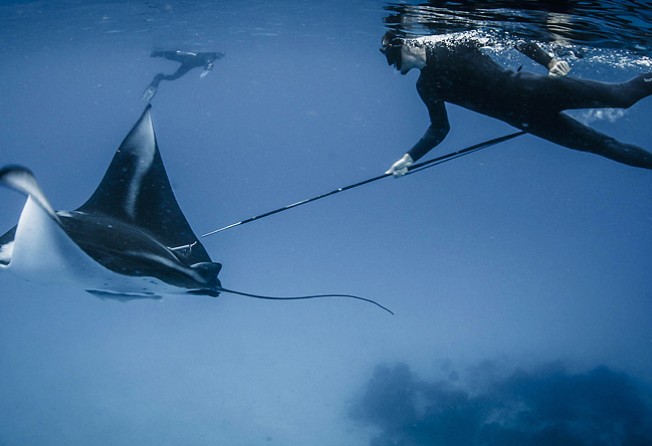Indonesia teaching the manta ray tourism mantra in quest to save fish
World's largest sanctuary for rays starts spreading message they are worth more alive than dead

Indonesia is now the world's largest sanctuary for manta rays, after officials were persuaded that the gentle giants were worth more alive as tourist attractions than hacked up as food and traditional Chinese medicine.
The government announced that manta rays within the archipelago's 5.8 million square kilometres of ocean will be protected from fishing and export.
It will take time and co-operation at multiple levels to enforce the ban on poaching in the biggest global shark and ray fishery.
Conservationists point to simple economics as an incentive. According to a study published last year in the online journal PLoS One, a manta ray is worth up to US$1 million over the course of its long lifetime.
This is thanks to tourists who are willing to pay generously for a chance to swim with the curious creatures that glide gracefully through the water by flapping their wide wings, as if flying.
They are worth only US$40 to US$500 dead. Their wings are used as filler in shark's fin soup and their gill rakers are dried for use in Chinese medicine.
Government officials were said to be surprised the tourism value is so high. "That's a very powerful argument," said Tiene Gunawan, marine programme director at Conservation International Indonesia. "This is such a big, big, big country. When looking at the size of the water, it's huge. And I think we should start small and make some kind of pilot for this enforcement."
Conservation groups are working to teach fishermen about the value of keeping the mantas alive, while business people, the military, water police and local officials are assisting.
In some areas, including a well-known spot near the resort island of Bali, locals are already seeing profits from taking snorkelers out on their fishing boats, or working at dive resorts where mantas are a top attraction.
Watch:Indonesia announces world's biggest manta ray sanctuary
In Indonesia alone, manta tourism brings in an estimated US$15 million each year, according to the PLoS One report. "Indonesia now has the second-largest manta ray tourism industry in the world," Agus Dermawan, director of the country's Marine Conservation Directorate, said.
"Given the huge area of reefs and islands in our country, if managed properly, Indonesia could become the top manta tourism destination on the planet."
Increased demand has led to a sharp drop in manta numbers in recent years, raising international concern.
Multibillionaire Virgin Group boss Richard Branson has sounded alarms though the "Manta Ray of Hope" conservation project. Last year the Convention on International Trade in Endangered Species of Wild Fauna and Flora imposed new trade regulations for the species.
Mary O'Malley, of the San Francisco-based group WildAid, said: "Enforcement and community education are always necessary in order for this or any law to have a real impact, but passage of the law is a critical step."
She said her organisation plans to launch a campaign in China to address demand there.
Mantas are among the world's largest fish and have a wingspan of up to eight metres. Found in the tropics, they can live up to 50 years, but do not mature until the age of about eight and give birth to a single pup only every two to five years.
The slow reproduction rate means fishing cannot be sustained over the long haul, and mantas are classified as vulnerable to extinction on the International Union for Conservation of Nature's Red List of Threatened Species.
Mantas are capable of migrating more than 1,000 kilometres. Unlike stingrays, their tails have no barbs and are harmless to humans. They are beloved by divers and snorkellers due to their size, friendliness and grace.